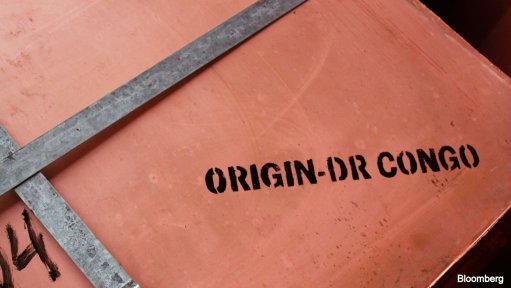Gold Fields South African production now down to 13% – CEO

Gold Fields CEO Nick Holland outlines to Mining Weekly Online’s Martin Creamer the profile of the new streamlined Gold Fields after the unbundling of the company’s narrow-reef gold mines into Sibanye. Camera Work and Video Editing: Darlene Creamer.
JOHANNESBURG (miningweekly.com) – Production from South Africa is now down to 13% of its total production, Gold Fields CEO Nick Holland said on Thursday.
Prior to Gold Fields’ the unbundling out of the company of its labour-intensive narrow-reef mines, South African production made up close to half of total production.
While Gold Fields’ international operations had an outstanding December quarter, the South African mines buckled under the country’s industry-wide illegal strikes.
“Our production from South Africa was 48%. South Africa now drops to 13% of production post the deal,” Holland said after reporting a 7% decline in December-quarter gold production as a result of the wave of illegal strikes that hit the mining industry last year.
The fully mechanised 3 500-employee South Deep was the only remaining South African asset Gold Fields operated, as it now had a completely different profile after the hive off of the Kloof, Driefontein and Beatrix gold mines to Sibanye Gold.
The new Gold Fields was now far more heavily weighted outside of South Africa with its Tarkwa and Damang in Ghana, St Ives and Agnew in Australia and Cerro Corona in Peru.
Its project portfolio was made up of Arctic Platinum in Finland, Far Southeast in the Philippines, Chucapaca in Peru, Yanfolila in Mali and exploration projects in North America with a sizeable reserve base of 64-million ounces of gold.
Excluding South Deep, which was still in build-up phase, the rest of the Gold Fields portfolio had a good profit margin of 25% after capita expenditure.
“These assets are cash generating,” Holland said.
This year’s ramp-up from South Deep was expected to ease the cash pressure on the non-South African part of the group.
The footprint of the South African corporate office had been cut, exploration had been reduced from $125-million to $80-million.
The company spent R2.5-billion at South Deep last year where production was slightly below that of 2011 at 270 000 kg.
This year the company expected to spend R1.85-billion, taking it over the hump of the capital required.
South Deep was being structured to advance the operation to a break-even position in the second half of 2013, which was significant for the ‘new Gold Fields’, which no longer had the significant cash generation from the other assets.
Every asset now had to stand on its own and South Deep would have to “wash its own face”.
The opening up of the South Deep orebody through distress development had increased 75% and large open-stope cavities were being mined.
Destressing enabled mining at 3 000 m with lower rock pressures of 50 MPa rather that 500 MPa, which was the key to opening up the orebody.
“We have one-tenth impact in the distressed area,” said Holland, adding that the momentum was now there for South Deep. “We’re feeling a lot more confident about where we’re going.”
St Ives’ high-cost heap-leach operation had been terminated, the smaller Agnew was now generating cash after being the worst first-half performer, Tarkwa’s south heap-leach operation had been cut out, Damang’s three-million reserve ounces would be capitalised and a heap-leach operation was being considered to add to output at Cerro Corona, where costs were among the industry’s lowest.
Seven per cent lower group attributable gold production totalled 754 000 oz for the December quarter, down from the 811 000 oz achieved in the September quarter.
The illegal strikes were compounded by a slower-than-anticipated resumption of normal production following the cessation of the strikes.
Production at the Kloof Driefontein Complex (KDC) and Beatrix decreased by 30% from 316,000 oz in the September quarter to 220 000 oz in the December quarter.
The strike action during the December quarter resulted in the loss of 23 production days at KDC East, 27 production days at KDC West, 29 production days at Beatrix as well as 110 000 oz of gold production during the quarter.
The JSE- and NYSE-listed Gold Fields Limited had net earnings of R546-million in the December quarter compared with R1 424-million in the September quarter and R2 605-million in the December 2011 quarter.
Net earnings from continuing operations for the December quarter amounted to R382-million compared with R1 000-million in the September quarter and R1 467-million in the December 2011 quarter.
Net earnings from discontinued operations for the December quarter amounted to R164-million compared with R425-million in the September quarter and R1 138-million in the December 2011 quarter.
Comments
Press Office
Announcements
What's On
Subscribe to improve your user experience...
Option 1 (equivalent of R125 a month):
Receive a weekly copy of Creamer Media's Engineering News & Mining Weekly magazine
(print copy for those in South Africa and e-magazine for those outside of South Africa)
Receive daily email newsletters
Access to full search results
Access archive of magazine back copies
Access to Projects in Progress
Access to ONE Research Report of your choice in PDF format
Option 2 (equivalent of R375 a month):
All benefits from Option 1
PLUS
Access to Creamer Media's Research Channel Africa for ALL Research Reports, in PDF format, on various industrial and mining sectors
including Electricity; Water; Energy Transition; Hydrogen; Roads, Rail and Ports; Coal; Gold; Platinum; Battery Metals; etc.
Already a subscriber?
Forgotten your password?
Receive weekly copy of Creamer Media's Engineering News & Mining Weekly magazine (print copy for those in South Africa and e-magazine for those outside of South Africa)
➕
Recieve daily email newsletters
➕
Access to full search results
➕
Access archive of magazine back copies
➕
Access to Projects in Progress
➕
Access to ONE Research Report of your choice in PDF format
RESEARCH CHANNEL AFRICA
R4500 (equivalent of R375 a month)
SUBSCRIBEAll benefits from Option 1
➕
Access to Creamer Media's Research Channel Africa for ALL Research Reports on various industrial and mining sectors, in PDF format, including on:
Electricity
➕
Water
➕
Energy Transition
➕
Hydrogen
➕
Roads, Rail and Ports
➕
Coal
➕
Gold
➕
Platinum
➕
Battery Metals
➕
etc.
Receive all benefits from Option 1 or Option 2 delivered to numerous people at your company
➕
Multiple User names and Passwords for simultaneous log-ins
➕
Intranet integration access to all in your organisation


















